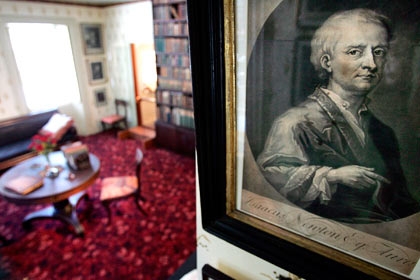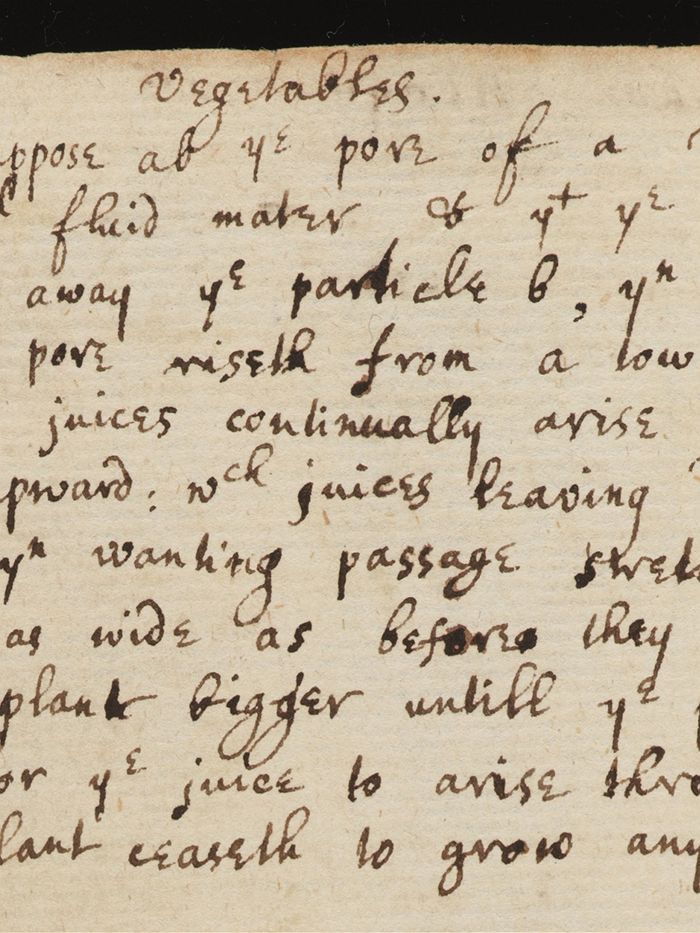Newton's journal reveals seeds of plant biology
 16:20, 3 February 2015
16:20, 3 February 2015YEREVAN, FEBRUARY 3, ARMENPRESS. Sir Isaac Newton's interest in botany extended well beyond the fabled apple falling from a tree - he also appears to have understood how water moves from roots to leaves over 200 years before botanists did.
As reports “Armenpress” citing ABC, Newton, who lived from 1643-1727, is known for his observations on the properties of light, the invention of calculus, and for his time as head of the Royal Mint, and president of the Royal Society, the leading scientific body of the day.
But buried in a notebook Newton used during his undergraduate days, is half a page of text on plant function, which has been reviewed in the journal Nature Plants by Professor David Beerling of the University of Sheffield.
In his notes, Newton describes how water is drawn up through a plant's roots and out through its pores.
Newton wrote:
"Suppose a b the pore of a Vegitable filled with fluid mater & that the Globule c doth hitt away the particle b, then the rest of subtile matter in the pores riseth from a towards b & by this meanes juices continually arise up from the roots of trees upward leaving dreggs in the pores & then wanting passage stretch the pores to make them as wide as before they were clogged. which makes the plant bigger untill the pores are too narow for the juice to arise through the pores & then the plant ceaseth to grow any more."
"In modern terms what's apparently being described is the evaporative escape of water from a shoot -- transpiration -- driven by energy from the Sun," writes Beerling.
First proposed in 1895, transpiration involves the absorption of water through a plant's roots, its transportation up through the stem, and eventual evaporation into the atmosphere from the plant's surface, usually through leaf pores or stomata.
The system works because the loss of water through evaporation causes an area of low pressure within the plant, which creates tension.
The cohesiveness of water molecules transfers this tension down through the xylem, effectively pulling water from a higher pressure area at the base of the plant, against the opposing force of Newton's gravity, up to the leaf surface.
Beerling thinks Newton's pores were probably water-conducting tissues inside stems, rather than stomata.
He bases this on the fact that the earliest known published observations of pore-like structures on leaves appeared in 1675 in Anatome plantarum by Marcello Malpighi, who saw stomata through an early microscope.
However, Beerling writes, "presumably, Newton too could have constructed some sort of hand lens to observe stomata had he been inclined, given that he built the first reflecting telescope a few years later in 1668."
According to Beerling, the context of Newton's notes on plant juices isn't known.
"We have no idea how long Newton spent thinking about the workings of plants or what prompted these thoughts," writes Beerling.
"Reclusive and secretive, it's doubtful he gained botanical inspiration from conversations with others at Cambridge University interested in plants."






















